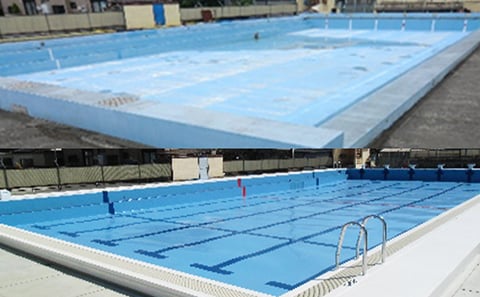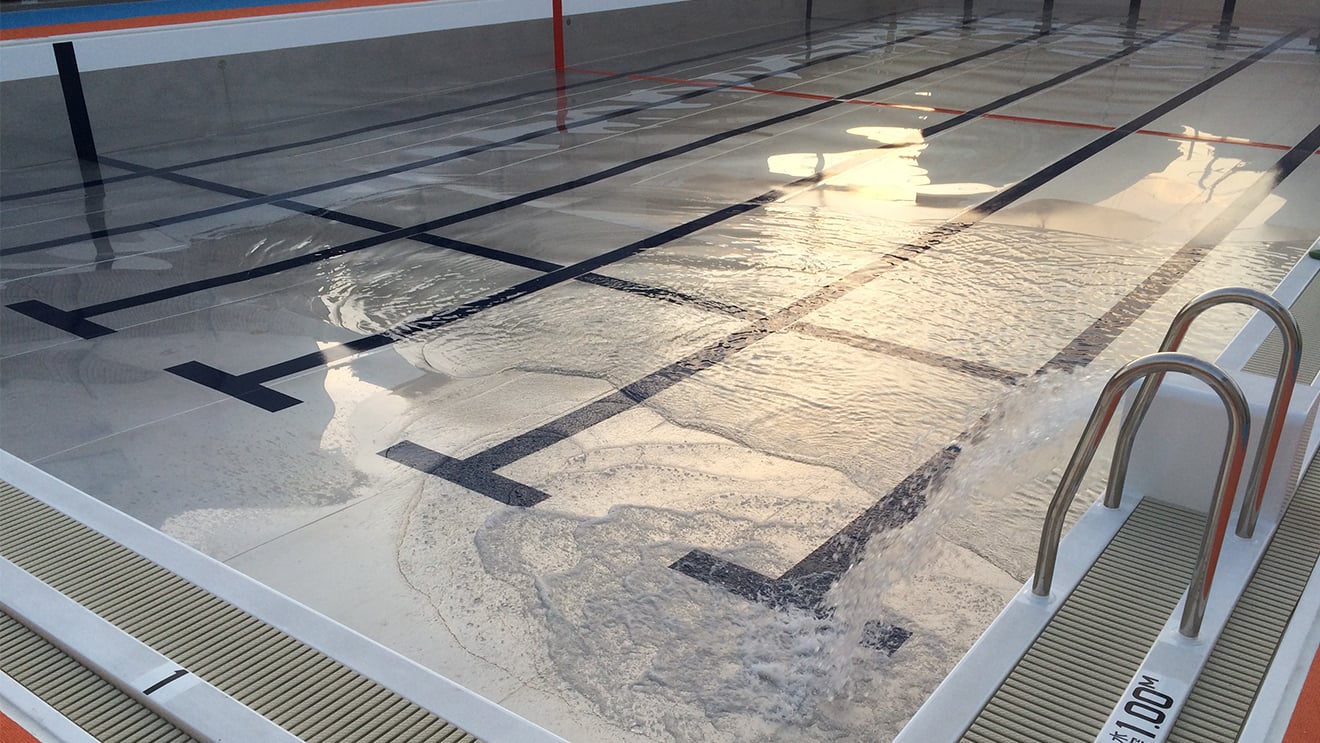POINT There were many cases in which an aging concrete pool had to be renovated, but there was no budget for totally renovating the pool. Hence, maintenance costs were running high due to life-prolonging measures, such as inexpensive painting renovation and sheet affixing renovation, and repeated maintenance every few years. Therefore, instead of removing the entire pool and constructing a new one (rebuilding), we developed a stainless lining upgrade method of reusing the body of the existing pool and affixing a stainless lining inside the pool. We succeeded in reducing costs and construction time and making the appearance and durability of the pool comparable to those of new ones.
Challenges prior to implementation
High renovating costs of the aging concrete pool
Currently, most elementary and junior high schools use their own pool facilities for swimming lessons. Although schools would like to rebuild aging pools that were installed in the Showa era (1926–1989), full renovation requires about 150 million yen. At present, however, many local governments cannot afford to secure a large budget for pool renovation because they must give priority to making school buildings and gymnasiums earthquake-resistant, converting toilets to Western style ones, and installing air conditioning systems.
Therefore, in quite a few cases, a life-extending measure is taken by repairing the painting or the sheet lining, which can be done at a relatively low cost. However, since such repairs are not fundamental, they require repeated construction every few years, resulting in a large amount of accumulated maintenance costs.
Products
Development of a stainless lining method that significantly reduces costs and construction time while giving an appearance and durability comparable to new pools
Stainless steel is an environmentally friendly material that is strong, highly corrosion resistant and durable, and recyclable when removed. In addition, since it is a material with a high degree of freedom in terms of construction procedures involving cutting, bending, and welding, it is possible to apply stainless lining inside a pool according to the shape of the existing concrete pool. Reusing the body of an existing pool eliminates the need for costly and time-consuming work to remove the existing pool, resulting in a significant reduction in renovation costs and renovation time.
Elementary School A prepared a proposal request form for the design and manufacturing vendors of pool renovation work. The proposal request included a need for the preparation of materials to compare work based on the stainless lining method and the painting repair and sheet affixing work. The school compared proposals from each vendor and selected the proposal from MITSUI MIIKE MACHINERY in recognition of the durability and degree of earthquake-resistance of the stainless lining method and the reduction of maintenance costs.
Post-implementation benefits
Completion of refurbishment of the pool’s main structure, upgrade of the filtration system and piping, etc. in about two months
It took about two months to repair the main structure of the pool, replace the filtration system and piping, and renovate parts of the dressing room, toilet and poolside. After about a year of design, production, and construction from the start of the study, the pool at Elementary School A was transformed into one with the appearance and durability of a new pool. The cost was reduced to about 80 million yen.
As a result, the time spent on maintenance after the end of each year's swimming pool classes as well as on research and budgeting for repairs, which had been a challenge for staff members in charge of facilities in the local government, could be allocated to performing other tasks, making staff members quite content. The city’s government is planning to gradually adopt the stainless lining method also to repair other aging school pools in its jurisdiction going forward.



